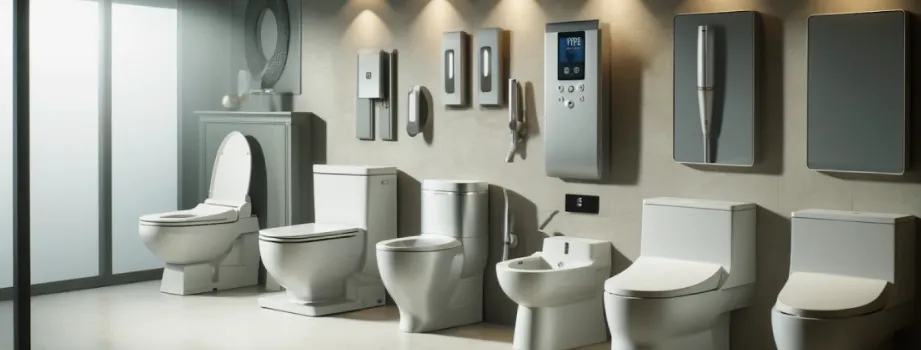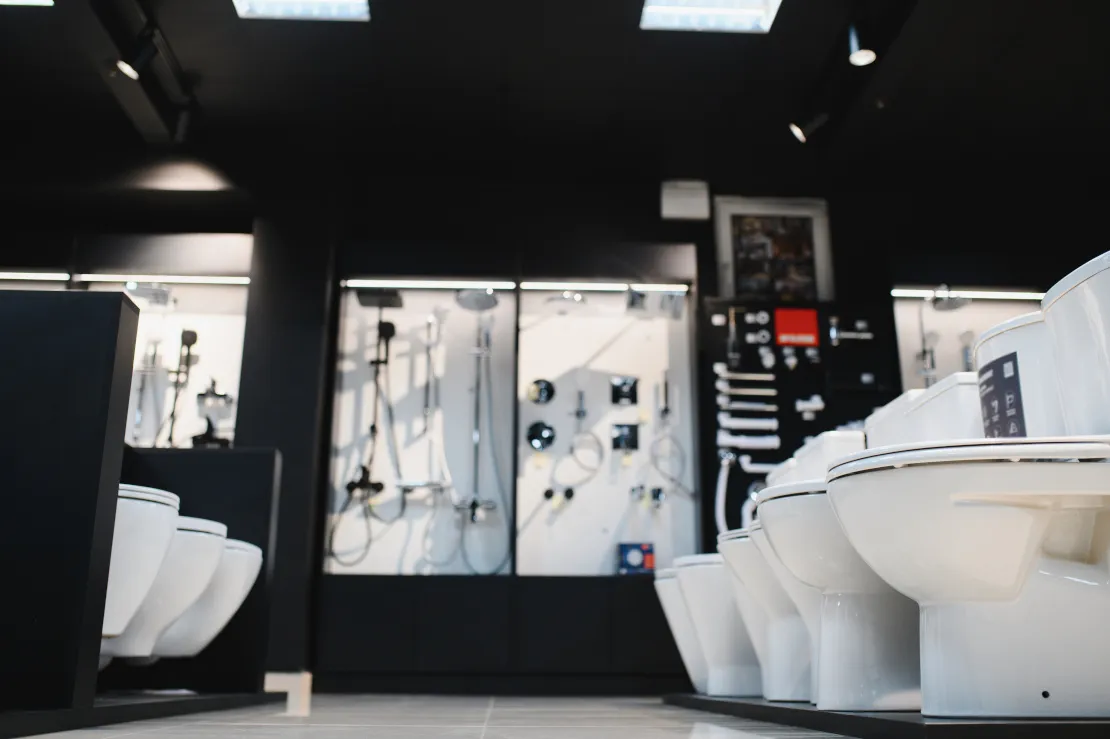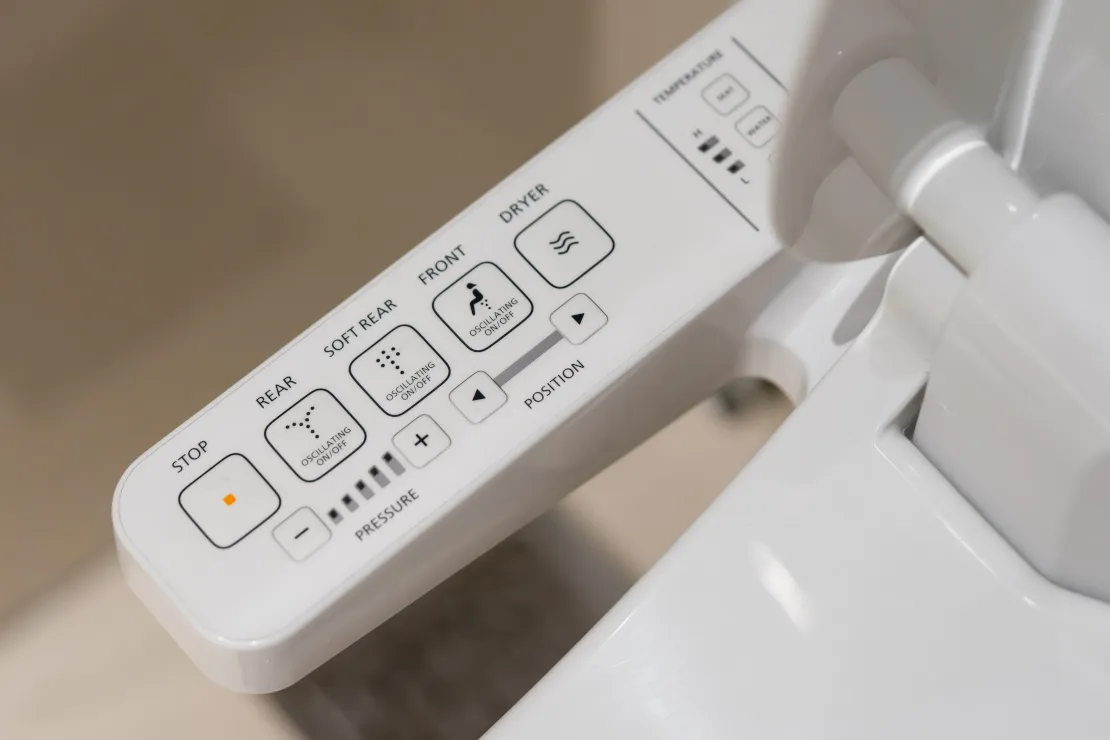How to Choose the Right Bidet Toilet Seat
Last Updated: Dec 02, 2024
Writer: Emily Hartfield


Upgrading to a bidet toilet seat can elevate your bathroom experience from ordinary to spa-like. With features like warm-water cleansing, heated seating, and adjustable spray settings, bidet seats offer greater comfort, improved hygiene, and even potential cost savings on toilet paper. But before you invest, it’s important to understand the different types, features, and installation considerations. This guide will help you select the perfect bidet toilet seat that aligns with your preferences, budget, and bathroom’s style.
1. Understanding the Different Types of Bidet Toilet Seats
-
Non-Electric Bidet Toilet Seats:
Non-electric models use water pressure from your existing plumbing. They are often more budget-friendly, straightforward to install, and require no electrical outlet. However, you’ll typically have fewer adjustability options and no warm-water feature unless you have warm water lines available.
-
Electric Bidet Toilet Seats:
Electric models deliver the full range of modern amenities: adjustable water temperature and pressure, heated seating, warm air drying, and in some cases, built-in deodorizers. These seats often require access to a nearby electrical outlet but offer a luxurious level of comfort and control.
-
Round vs. Elongated Models:
Your toilet’s bowl shape plays a key role in selecting the right seat. Bidet seats are commonly available in round or elongated shapes. Make sure you know your toilet’s dimensions to ensure a proper, seamless fit.
2. Key Features and Functions to Consider

-
Adjustable Water Pressure and Temperature:
With electric seats, you can customize spray settings to your personal comfort level. This ensures a gentle yet effective cleanse every time.
-
Heated Seat and Warm Air Dryer:
A heated seat eliminates the shock of a cold surface on chilly mornings, while an integrated warm air dryer helps reduce reliance on toilet paper, promoting eco-friendliness and comfort.
-
Self-Cleaning Nozzles:
Many bidet seats include self-cleaning nozzles that rinse themselves before and after each use. Some even feature sterilizing functions to ensure hygienic operation and peace of mind.
-
Adjustable Nozzle Positioning:
Personalized positioning options allow each user to find their ideal angle, ensuring thorough cleansing and greater comfort.
-
Deodorizer and Nightlight:
Built-in deodorizers help maintain a fresh bathroom environment, and a gentle nightlight can guide you during late-night visits without the need for harsh overhead lighting.
-
Remote Control vs. Side Panel:
Some bidet seats operate with a remote control for convenient, wireless adjustments. Others have a side panel attached to the seat. Consider which interface you prefer for both usability and aesthetics.
3. Installation Considerations
-
Electrical Outlet Placement:
If you choose an electric bidet seat, ensure an electrical outlet is installed within reach of the seat. GFCI-protected outlets are typically required for wet areas, and you may need a professional electrician to install one safely.
-
Water Supply Line:
Most bidet seats come with a T-valve to connect to your toilet’s existing water line. Ensure you have standard plumbing connections, and follow the manufacturer’s instructions for a proper, leak-free fit.
-
Tools and Expertise:
Installation is often a simple do-it-yourself project, requiring basic tools. However, if you’re not confident in your plumbing or electrical skills, consider hiring a professional.
4. Selecting the Right Brand and Model
-
Brand Reputation:
Look for brands known for quality, innovation, and responsive customer service. Reading customer reviews and checking warranty policies can provide insights into long-term.
-
Budget Considerations:
Prices vary widely—from simple non-electric models under $100 to feature-packed electric seats costing several hundred dollars. Determine which features are essential and invest in the best quality model you can afford for long-term enjoyment.
-
Aesthetic and Fit:
Beyond function, your bidet seat should seamlessly blend with your toilet’s design. Most seats have a neutral appearance, but consider finishing touches like contours and materials to match your bathroom’s overall style.
5. Maintenance and Care Tips
-
Regular Cleaning:
Wipe down your bidet seat with a soft, damp cloth and mild cleanser. Avoid abrasive cleaners that may damage the finish or harm the nozzles.
-
Filter Replacements:
Some electric models have water filters that require periodic replacement. Follow the manufacturer’s guidelines to maintain consistent water quality.
-
Routine Check-Ups:
Inspect hoses, nozzles, and connections occasionally. Tighten any loose fittings and address minor issues promptly to prevent leaks or malfunctions.
Conclusion:
A bidet toilet seat transforms a commonplace routine into a soothing, comfortable, and environmentally conscious experience. By understanding the different types of seats, comparing feature sets, considering installation factors, and selecting a reputable brand, you’ll be well on your way to finding the perfect match for your bathroom. With proper care, your bidet seat will provide elevated comfort and hygiene for years to come.